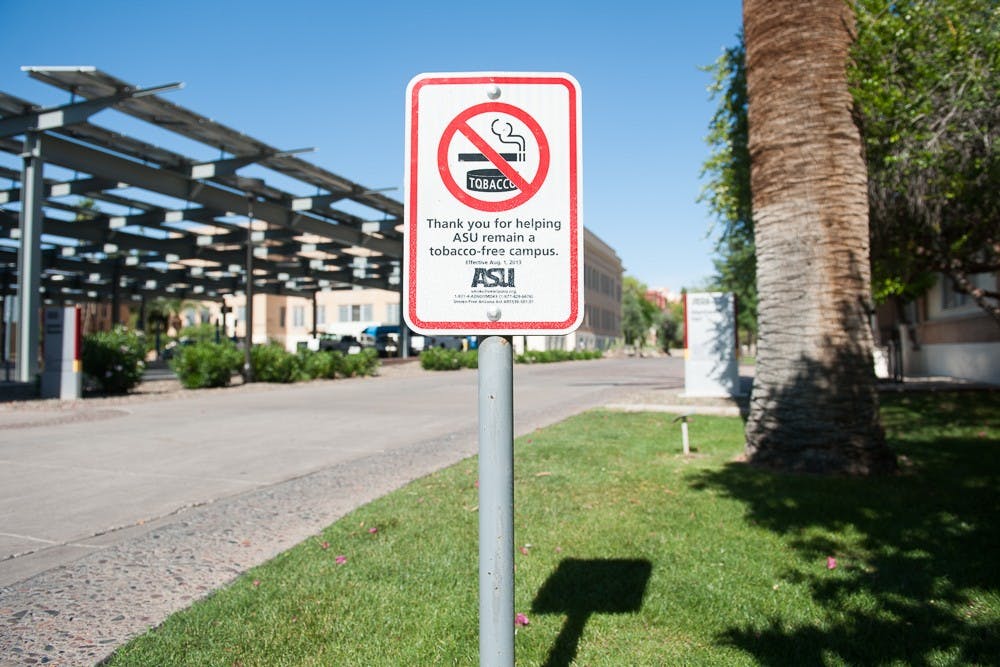Starting on this month, there will be fewer flames and far more fines lit at ASU. Known to many students as the FLAME approach, ASU is setting fire to social enforcement of the tobacco-free policy.
The smile and wave procedure was blown out in favor of an immediate warning, maybe with a friendly grin, a request to “butt out.” Sorry, folks, on the second and third offense you’ll be charged $50.
The change in direction of the flagship New American University comes after a supposed “failure in enforcement,” ASU Director of Wellness Karen Moses wrote in an email to a reporter with The State Press.
“Over time, it was evident that social enforcement was not incentive enough for ongoing compliance for some smokers,” Moses wrote in the email.
But when The State Press met with ASU President Michael Crow in April 2014, he said that social enforcement worked and no fees for smoking on campus would be happening any time soon.
In fact, when Tempe Undergraduate Student Government passed the ban in 2012, the initiative was supposed to focus on education, not penalties. ASU implemented programs on campus to help students, staff and faculty kick tobacco.
In response to the Tempe USG vote, Crow said that “...it looks like the students didn’t want smokers around, and so they smoke on the sidewalk across the street” from Fulton Center, where Michael Crow has offices.
However, ever the pragmatist when pressed for an answer, he responded with a bit more telling advice on when and under what circumstances fees would be doled out onto the backs of students.
“Let’s say that a person became belligerent about it, well, now they’re disturbing the peace, the penalty is different at that point. Right now we have no plans to give any citations…,” Crow said.
Despite perceived belligerence, there is evidence that the tobacco-free policy has already changed student behavior with less smokers seen in heavily populated areas of campus such as the MU, Palm Walk and outside residence halls.
This evidence, though, was a result of random interviews with students on campus. According to the ASU's website, 87 percent of ASU students do not use tobacco products.
Out of the 13 percent of students who do smoke, and the smaller percentage who choose to light up on campus, ASU is creating a tobacco-free enforcement team to locate those violating the policy. For now, the Walk-Only zone enforcement team shoulders this responsibility.
But is it really feasible to have students patrolling every crevice of campus to find students violating the policy? And even if a violator is caught, who isn’t to say they couldn’t just lie about about not being a student?
As every campus-bound freshman knows, there are countless hiding places for students to be on campus. It would be a huge strain on ASU resources to account for all of these places and hassle people for smoking.
If it’s true that social enforcement was such a failure, ASU should be looking into the root of the problem. Tobacco-use is a real addiction that a lot of people struggle with. Therefore, Implementing penalties will only cause more creative tactics of rebellion.
Want to join the conversation? Send an email to opiniondesk.statepress@gmail.com. Keep letters under 300 words and be sure to include your university affiliation. Anonymity will not be granted.
Like The State Press on Facebook and follow @statepress on Twitter.




